Damask rose: description and cultivation
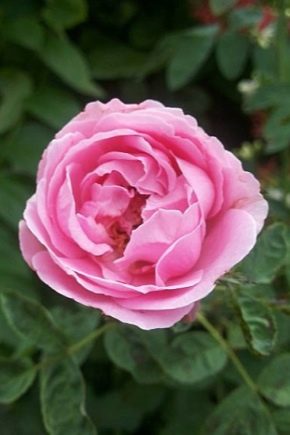
Beauty, a wide palette of colors and a stunning aroma have made the rose the world's most widespread flower and a legendary symbol of love and passion. For more than five thousand years, mankind has been cultivating this representative of the wild rose genus. One of the most fragrant varieties, the damask rose, is today grown both in private gardens and on an industrial scale.

Variety history
China, India, the island of Crete and Ancient Iran (Persia) have long been arguing about the right to be called the homeland of the queen of flowers. It is no coincidence that Persian poets called their homeland Gulistan - the land of roses. Damascus rose (Rosa damascena) also traces its history from the luxurious gardens of the Middle East. In the valley of the Barada River, fertile land became the site of the founding of one of the richest and most famous cities of antiquity. Lying at the intersection of trade routes, the Ancient Damascus kingdom, called in poetry "fragrant Eden", was distinguished by a mild climate and an abundance of greenery; it was a real oasis in the middle of the desert.
The image of the damask rose can be seen in the surviving frescoes of ancient Pompeii, the flower was very popular in the Roman Empire. Then the variety underwent some oblivion in order to revive with renewed vigor in the Arab East. It is not for nothing that the Arabs are considered the pioneers of the method of obtaining rose water by distillation.
Thanks to roses, history has retained the name of the crusader Robert de Brie: fascinated by the fragrant damask shrub, he brought it to France in the middle of the 13th century... The variety quickly spread and dominated European gardening until the 19th century, when it was replaced by hybrids of Chinese tea roses.
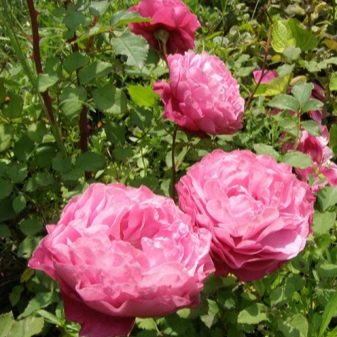
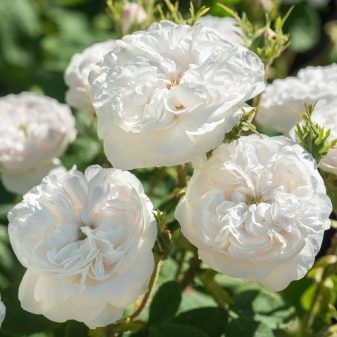
Description
The classification divides the rose family into groups of modern and antique roses. Damascus belongs to the class of old garden roses, which originated from a hybrid species that appeared as a result of the crossing of Gallic and musk roses (Rosa gallica and Rosa moschata).
The plant is a perennial shrub up to 1.5 m high with long stems and large green leaves. Terry flowers, rather large, up to 7 cm in diameter, can be of various shades - from cream to bright pink. Sometimes you can find varieties of white and very rarely - red. The thorns in different varieties are also different: they are reddish, rather impressive or small bristle-like. The shrub blooms for a long time, but most often once, in June-July, although remontant (re-flowering) species have already been bred. Red smooth fruits appear on the branches at the end of August.
This group of roses unites an unusually strong aroma, therefore this particular variety has been cultivated since ancient times to obtain rose oil and fragrant water.
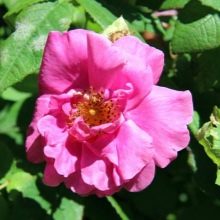
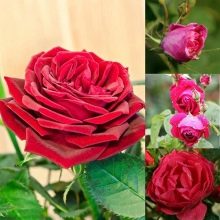
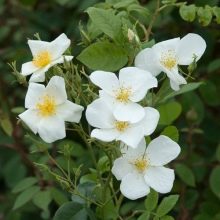
Varieties
Today, there are many varieties of Damask roses, but we will analyze only the most popular of them.

Kazanlik rose
This variety was brought to the ancient Bulgarian town of the same name in the 17th century by the Ottoman Turks. The unique features and stunning smell of Turkish roses have found new facets in Bulgaria. The favorable climate of the region contributed to the cultivation of a valuable aromatic species, and today the Valley of Roses in the vicinity of Kazanlak is a famous tourist destination, where an annual festival is even held. And the fragrant flower, famous for its beauty and aroma, has become the national symbol of the country.The Kazanlak oil-bearing rose is considered one of the best in the world for the production of essential oil, and the Bulgarian masters keep the unique method of its production secret. The bush of this rose is erect, with strong shoots. Double flowers are pink with golden stamens. It does not bloom for long, once a summer.

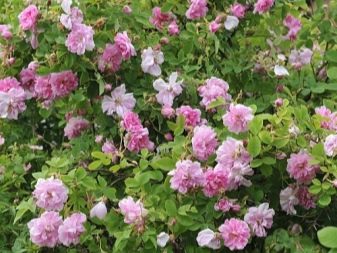
Leda
It is a low, spreading bush, reaching 1.2 m in height. Named after the heroine of Greek myths, the variety has distinctive color characteristics. Its dull leaves are quite unusual: dark green, rounded, with a silvery gray underside. During flowering, the bush is very beautiful: dark red buds gradually open into snow-white terry inflorescences with a cherry border at the petals. Leda is resistant to rain, frost and disease.
Unpretentious to the composition of the soil, grows well even in the shade.

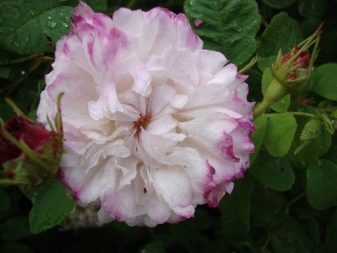
Ispahan
A very fragrant variety with pale pink inflorescences, the name of which comes from the Iranian city of Isfahan. In the Middle Ages, it was one of the largest cities in the world. The variety is excellent against diseases and bad weather conditions. Tall bush with one flowering.
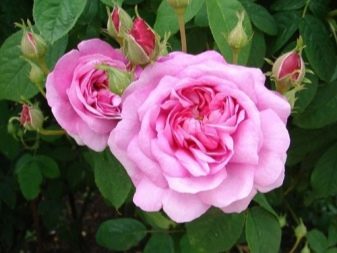
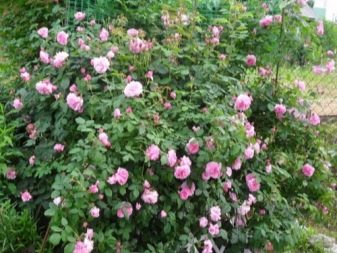
York and lancaster
This unusual variety owes its origin and name to the famous page of British history - the end of the War of the Scarlet and White Rose, which lasted more than 30 years. The coat of arms of the House of Lancaster was decorated with a red flower, and the opposing York dynasty chose white as their sign. The new King Henry VII Tudor made the symbol of the peace that reigned after long bloody years of peace with the heraldic emblem in the form of a double rose: a white flower on top of a scarlet one. The Tudor rose is still one of the most frequently used signs today: on the royal coat of arms, coins, etc. It is believed that the variety was bred by a Belgian breeder around 1576.
On one bush of this unique multicolored species, you can see roses of white, scarlet shades, and luxurious variegated inflorescences. The flowers are lush, double, with a large number of petals - 27-35 pieces. The plant reaches 150-200 cm in height, tolerates frost well, can grow in the shade, has an average resistance to diseases.
The variety pleases with abundant flowering and it lasts quite a long time.
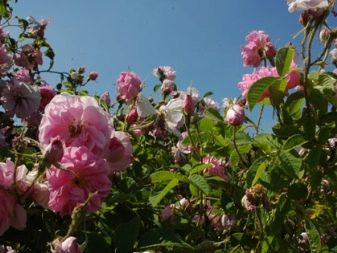

The subtleties of growing
Ideal for growing damask roses in the south of Russia, but gardeners of the Middle Belt, Siberia and the Far East region also successfully use them on their personal plots and in the design of city parks as a decorative type. Of course, industrial cultivation of the variety for the production of essential oil in most regions of Russia is impossible. When planting in territories north of the Voronezh region, rose bushes must be provided with a covering material for the winter.
The place for the rose on the site must be chosen carefully: protect the bush from the scorching sun, but also do not plant it in a corner that is constantly in the shade. The shade provokes the appearance of powdery mildew and various fungal infections, and flowering can become very scarce. It is advisable to protect the bushes from drafts. Planting is usually carried out in the spring on a flat area in fertile soil warmed by the sun: black soil or loose loam.
In areas with a mild climate and warm autumn, planting is possible at the end of September.
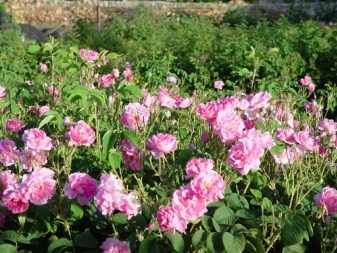
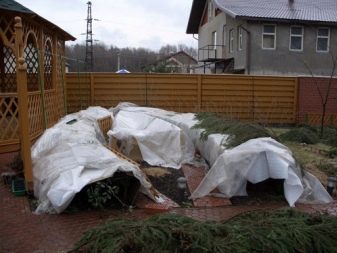
If you plan to plant several plants, the distance between the bushes should be at least 70-80 cm. A layer of nutrient mixture is poured into the prepared depression (about 50x50 cm): humus, humus, mineral fertilizers. All damaged, diseased and dry roots must be removed from the seedling. The root collars are buried 5 cm, the planting hole is covered with soil and watered abundantly. Ideally, the soil around the seedling should be mulched using sawdust or peat. Mulch eliminates the need for frequent watering.
Watering the plant is regulated by the temperature regime: on hot days, it should be increased up to 2 times a week, and gradually reduced as autumn approaches. Before the onset of frost, roses should be watered abundantly, up to 30 liters per bush.
Moreover, warm water is always prepared for irrigation, diseases can develop from cold.

The rose bush requires crown formation. It can even be done in the first year and then sanitized pruning regularly in early spring.
When the roses have bloomed and the night temperatures will drop, you need to cover their root system for the winter. Most often, peat is used for this or simply a layer of earth about 15 cm high is poured around the trunk. In the spring this shelter is removed when the probability of frost return has already disappeared.
Damascus rose is a wonderful old variety that does not require excessive maintenance, but with enough love, it will give your garden not only a bright flowering, but also a stunning aroma.
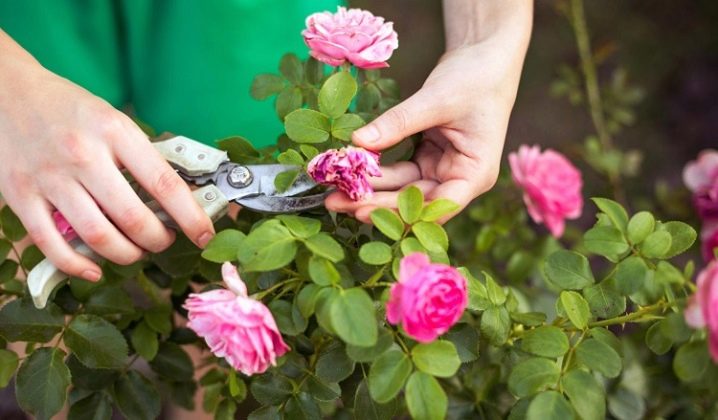
For the history of the origin of the Damascus rose, see the video below.

































































































The comment was sent successfully.